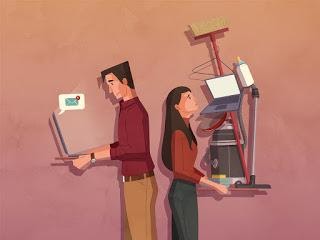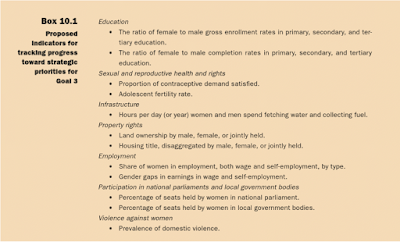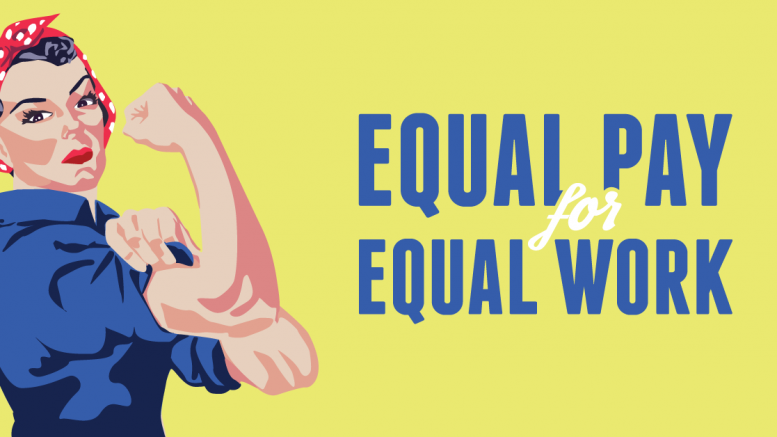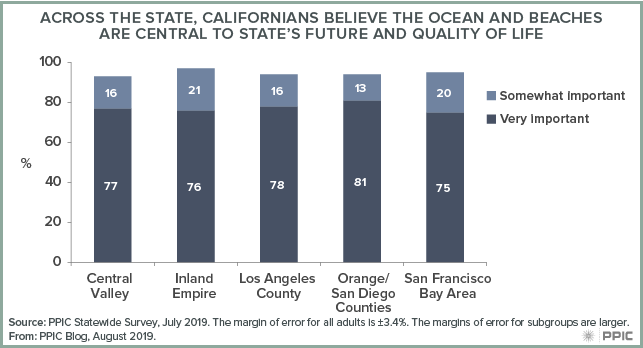10/12/2020
Gender Equality
We all take part in some civic engagement throughout our life at some point, usually on matters that affect us or that we find quintessential. Therefore, when gender inequality rises, I think it is vital that we take the time to understand, learn, and try our best to achieve gender equality. The article Gender inequality, written by Judith Lorber, discusses the two big waves that have impacted the fight for gender equality. She starts by mentioning the “The first wave of feminists of the nineteenth and early twentieth centuries fought for rights we take for granted today.” This may seem like a long time ago, but it has just been a short time compared to how long we have been on this earth. Therefore the first wave of this movement toward more gender equality was vital, “These rights were among those once denied to women of every social class, racial category, ethnicity, and religion- the right to vote (suffrage), to own property and capital to borrow money, to inherit, to keep money earned to initiate a divorce, to retain custody of children, to go to college, to become a professionally certified physician to argue cases in court, and to serve on a jury.” Gender inequality was also not just happening in one solemn place. It was happening across the world, and these small steps lead to a domino effect on equality in many countries. “In the United States, women did not get the right to vote nationally until 1920. Many European countries also gave women the right to vote after World War I, in repayment for their war efforts. French women, however, did not get suffrage until after World War II; Japanese women were also granted the right to vote after World War II in the constitution written under the American occupation of Japan; The Russian Revolution of the early twentieth century gave women equal rights,” even though there was criticism that came along with this movement. “Chinese women had legal equal rights after the Chinese communist revolution of 1948, but patriarchal families, specifically in rural areas, restricted their actual liberty.” Although all these countries were taking a step for gender equality, one can acknowledge that there was still a fragment of the population withholding this vital transition. People disagreed with this type of transition and undermined its progress for the goal of gender equality.
The author then proceeds to the second wave that took place by “account of the historical and current status of women in the western world argues that men set the standard and values and women are the others who lack the qualities the dominates exhibit.” In other words, they wanted to showcase how women had a minimal impact in the world when it came to setting standards or having values. They were also “thought” to lack the qualities to obtain such values. In a historical sense, men had always set rules, obtain power, and made most of the changes. Therefore, the author reinforces the primary mission of making women and men more equal legally, socially, and culturally, since gender equality is presented in all aspects of life by bringing up this second wave to the reader’s attention to gain equality.

Another example of this was the mentioning of “Women often receive lower pay for the same or comparable work, and usually are frequently blocked in their chances for advancement.” As well as having an “imbalance in the amount of housework and child care, a wife does compare to her husband, even when both spend the same amount of time in paid work outside the home.” This is seen in today’s workplace. It is evident that women attend their profession yet must take care of their children once out of work. This assumption places more workload onto a woman than men. “When women professionals are matched with men of comparable productiveness, men still get greater recognition for their work and move up career ladders faster.” The workplace is not the only place where this injustice is done, but it also stems from the amount of education given to the genders, “Take the form of girls getting less education Than boys of the same social class.” “Nearly two-thirds of the world’s illiterates are women, but in Western societies, the gender gap in education is closing at all levels of schooling, and among some groups, women surpass men in higher education degrees.” As a person who has attended a university, I can acknowledge that more women are participating in obtaining a higher education from the classes I have taken. There are more women in classes, which means this opportunity is being appreciated and being taken. However, this is just in western societies, and therefore this growth and progress must spread to other regions, not just western portions of the world.
Gender inequality does not stop there; it also occurs in violence and “In wars and national uprisings, women of one racial-ethnic group are often raped by the men of the opposing racial-ethnic group as a deliberate weapon of shaming and humiliation. Domestically, women are vulnerable to beatings, rape, and murder-often by their husbands or boyfriends, and especially when they try to leave an abusive relationship.” This type of inequality affects the other gender physically but also mentally, which doesn’t help for the progression of equality. Another area the author covers is the social reality that “in some countries with overpopulation, infant girls are much more often abandoned in orphanages than infant boys. In other countries, if the sex of the fetus can be determined, it is girls who are aborted.” Although I have mainly focused on the inequalities that affect women, there are times when gender inequality can also be disadvantages to men. In many countries, only men serve in the armed forces, and in most countries, only men are sent into direct combat.
Society has consistently maintained this view on the gender arrangements of “most societies assume that women will do the work of bearing and caring for children while men will do the work of protecting and supporting them economically.” Therefore it was important for the article to inform the reader that “it was estimated by a United Nations report in 1980, women do two-thirds of the world’s work, receive 10 percent of the world’s income, and own 1 percent of the world’s property.” Therefore, it is imperative to see that gender inequality is found not only in a specific area but everywhere. Gender inequality is built into the organization of marriage and families, work and the economy, politics, religions, the arts, and other cultural productions, and the very language we speak. Thus, they are making it fundamental that the public acknowledges all this information and changes in any way they can for equality.

The second article, “Is This a Man’s World? The Effect of Gender Diversity and Gender Equality on Firm Innovativeness,” was a cross-country study covering 18,547 firms in 15 developing countries. Their research involved the findings and understanding of gender diversity among the firm’s owners, workforce, and top female managers to benefit from innovation in developing countries. This research paper demonstrates actual results that come along when approaching gender equality. However, in their research, they mention that gender equality did not significantly moderate workplace relationships even to their contradictory belief. The article makes a critical statement on what social “gender equality entails, whether policy and practice grant boys and girls, as well as men and women equal access to education.” It also elaborates on the description of what entails when acquiring gender equality, referring to “girls and women having ‘equal access to quality education, economic resources, and political participation as well as equal opportunities with men and boys for employment, leadership, and decision-making at all levels.” This statement was similar to the statements mentioned in the previous article. Therefore, if changed for the better, it can lead to the improvement of gender equality. It was evident throughout the research that the “gender equality levels in the developing countries such as Africa, the Middle East, and South Asia that were participating in this study were much lower than in the developed countries, where the positive effect of gender diversity on innovation has been previously established.” It was also evident in the research experiment that they had to take into consideration the aspects of “gender equality spans across social, political, and economic dimensions in that it is manifested in-country policy, deep-seated in society and culture as well as visible in, e.g., girls’ and women’s access to education and their social status.” Thus, making a recurring fact that if alterations are made in these areas, it could lead to more innovation in companies but also worldwide. Future advancements could ensue, allowing us to combat this and any other social issues.
The research paper demonstrated that when women had a low social status in a gender unequal context, “the potential contributions of women stemming from their different values are likely to be disregarded when it came to the decision-making process occurring at the companies they were gathering information from.” Their findings suggested that male followers respected female leaders less than male leaders if they believe in traditional gender roles. This lack of respect could limit a firm’s innovativeness. Therefore, the researchers expected a higher degree of gender equality through the enhanced access of girls and women to education and knowledge. In inclusion, to better realize the benefits gender diversity could bring for innovation. The authors make a keen note that “the more women and men can contribute equal levels of inherently different knowledge and experiences to a firm’s knowledge pool, the more diverse the knowledge pool becomes, which is a driver for firm innovation.” From the collected data, they were able to deduct that gender inequality was correlated to the gender diversity. The result they obtained was “all levels are rather low, expressed in a Blau’s index of 0.05 among firm owners and of 0.16 among the overall workforce.” The research paper results were that roughly “91.49 percent of the firms’ owners and 84.82 percent of the firms’ workforce are men.” These findings are in line with previous insights that women are under-represented both in the workforce and, in this case, more in management or ownership positions in developing countries. The data demonstrated that female representation among top managers was only 8.70 percent. Furthermore, the mean in gender equality levels derived for this study (WEOI, 40.50) was far below the worldwide average of 57.30. It was evident that this showcased low levels of gender equality in developing countries.
Nevertheless, gender diversity among the firm’s owners, workforce, and top female managers significantly affected innovation. The research paper then makes a vital remark by stating, “Thereby our research channels a powerful message that supports not only the societal and ethical rationale for women’s inclusion in the workplace but also showcases the in addition to that associated business advantages for firms in developing countries.” It was interesting reading this research paper because the reader saw how companies with gender inequality ran. On the other hand, they also saw the benefits of gender equality and gender diversity in facilitating innovation due to the more diversified knowledge pool, problem-solving, and decision-making. This promotes the proposition of increasing gender equality; firms are more likely to benefit more from these advantages of gender diversity/equality. To conclude, the research paper also exemplifies how transformational leadership is essential for innovation and is seen more frequently exhibited by women than men.
Lastly, I decided to include a third source for this research—the book Task Force on Education Gender Equality. Taking Action: Achieving Gender Equality and Empowering Women gives a beneficial introduction of gender inequality and how we can resolve these issues, we could have better benefits. As mentioned in the first article, it is essential to consider that two decades of innovation, experience, and activism have achieved greater gender equality and women’s empowerment, but there is still much to go. Gender inequality is deeply rooted in entrenched attitudes, social institutions, and market forces; political commitment at the highest international and national levels is essential to institute the policies that can trigger social change and allocate the resource necessary for gender equality and women’s empowerment. The textbook mentions the organizations that are willing to invest and plan the future establishment to help this cause. An example provided in the textbook was the CEDA, which provides for women’s equal enjoyment with men of civil, cultural, economic, political, and social rights. For the past three decades, women have made gains, particularly in health and education, as evidenced in lower mortality rates, higher life expectancy, and reduced gender gaps in primary school education. However, it is still evident that many countries miss targeting and eliminating gender disparity in primary and secondary education.


Box 2.1: Explains gender equality is critical towards achieving all the goals. It states what each goal is and its importance.
Furthermore, the book clarifies that it requires a fundamental transformation in the distribution of power, opportunities, and outcomes for both men and women to accomplish this goal. From this source, the main points were the Seven strategic priorities for action as seen in Box 2.1, which include: Strengthen opportunities for post-primary education for girls while meeting commitments to universal primary education, Guarantee sexual and reproductive health and rights, Invest in fractures to reduce women’s and girls’ time burdens, Guarantee women’ and girls’ property and inheritance rights, eliminate gender inequality in employment and decreasing women’s reliance on informal employment, closing gender gap earnings, and reducing occupational segregation, increase women’s share of seats in national parliaments and local government bodies, and lastly the combat violence against girls and women. The main idea that was summarized was that women must also enjoy equal rights with men, equal economic opportunities, use of productive assets, freedom from drudgery, equal representation in decision-making bodies, and freedom from the threat of violence and coercion. The book exemplified the importance of having men and women working together as equal partners to secure better lives for themselves and their families. This is valuable for women and men to equally share the enjoyment of basic capabilities, economic assets, voice, and freedom from fear and violence. As well as being able to share the care of children, the elderly, and the sick, and having the responsibility for equal paid employment, and the joys of leisure. The textbook also informs the reader that there are ways to check gender equality progress, as seen in Box 10.1. This is crucial because it holds everyone accountable for the progress being made.

Box10.1: Proposed indicators for tracking the progress toward strategic priorities.
This topic matters to me the most because I would like to see a consistently fair world and justice, where everyone has the same opportunities to achieve their goals. As a woman, I know what it feels like to have this discrimination and injustice due to gender inequality. It happens in the workplace and our society, education system, economics, health care system, religion/beliefs, and personal lives. I think it is even more shocking that this topic is a social issue worldwide and in every aspect of our lives. While researching this topic, I was able to see that it affects all regions of the world, not just our own. This topic is of most utter importance because it affects me personally and the future generations to come. It has not been that long since women gained the power to vote, have ownership, and have the same rights as men. The incredible process that has been made has been more recent than we like to admit.
Furthermore, there is so much that has been denied to us and barely getting real credit for. Nevertheless, even with this progress, many obstacles still stand in our way to achieving actual equality. Therefore it is imperative to keep fighting for this issue and reach the same potential as the other gender. I feel personally affected because, as a woman, I have to face this inequality; I have to work twice as hard. On top of that, as a woman of color, I have to work even harder in the society we live in. The thought that I could work in the same position as the other gender but earn less is something that I do not find fair because we are equally doing the same work. We both deserve the same respect toward the work that we accomplish and not make anyone feel less than the other. I feel like this issue personally affects me from a social view too. Society has inscribed to us girls at a very young age different ideologies. Matters such as not being allowed to walk at night and buying extra protective items such as mace. The teachings our guardians sometimes place on us are another aspect that can affect gender equality, ideas such as creating different standards for both genders or being biased. An example that always comes to mind is allowing boys to stay out later than the girls. Sometimes, these ideologies can make young girls not believe in themselves by having the idea that they cannot do such things that boys can, holding them back from their true potential. The idea that girls are only allowed to do feminine activities when the reality is that it is also possible for them to play “rough” sports. These types of ideologies cause differences in gender equality very early on. Therefore it is crucial to start as soon as possible to stop these inequalities from arising and spreading to other parts of our lives.
It was also evident when researching this topic that inequality also goes on at academic levels. However, what I did feel proud of was the fact that western societies are closing this gap of having more women in educational systems. This will allow a greater chance of further opportunities. Having women learn male base majors will allow for future progress. I choose this topic because we still see very few women in office/government jobs/businesses, even with all these movements. This little representation of women in higher-level jobs demonstrated that more obstacles are placed on women who want to obtain the same power as men. One of the topics that will always come up is that there has never been a woman president here in the United States, which makes me wonder why. Other countries have allowed women to take office, yet as I mention, the lessons inscribed in society has placed a negative connotation with this event. More criticism is given to the opposing gender. The other topic is the health care system being sometimes bias towards the opposite sex. This inequality affects the social aspects and the health of the individuals, which should be the number one priority. Therefore, it is essential to take the steps mentioned in the book Task Force on Education Gender Equality for all these reasons, Taking Action: Achieving Gender Equality and Empowering Women and making a difference in the areas where gender inequality is seen and formed. By having gender equality, the world will have a brighter future, further developments, innovation, and access to new knowledge. It will ultimately take a significant step into a fair and justice society where everyone is recognized.

Citations:
Lorber, Judith. “Gender inequality.” Los Angeles, CA: Roxbury (2001).
Ritter-Hayashi, D, Vermeulen, P.A.M, and Knoben, J. “Is This a Man’s World? The Effect of Gender Diversity and Gender Equality on Firm Innovativeness.” PloS One 14.9 (2019): E0222443. Web.
Grown, Caren., Geeta Rao. Gupta, Aslihan. Kes, and UN Millennium Project. Task Force on Education Gender Equality. Taking Action: Achieving Gender Equality and Empowering Women. London; Sterling, Va.: Earthscan, 2005. Print. UN Millennium Project.
Pictures:
- [Gender Inequality]. (n.d.). Retrieved October 25, 2020, from https://www.todayonline.com/big-read/big-read-gender-equality-spore-remains-elusive-amid-entrenched-attitudes-about-womens-roles
- [Gender equality Areas]. (n.d.). Retrieved October 25, 2020, from https://genderequal.nz/what-were-doing/
- [Gender equality]. (n.d.). Retrieved October 25, 2020, from https://www.newtimes.co.rw/opinions/gender-equality-has-never-been-so-close-still-far-being-reality
- Grown, Caren., Geeta Rao. Gupta, Aslihan. Kes, and UN Millennium Project. Task Force on Education Gender Equality. Taking Action: Achieving Gender Equality and Empowering Women. London; Sterling, Va.: Earthscan, 2005. Print. UN Millennium Project.










